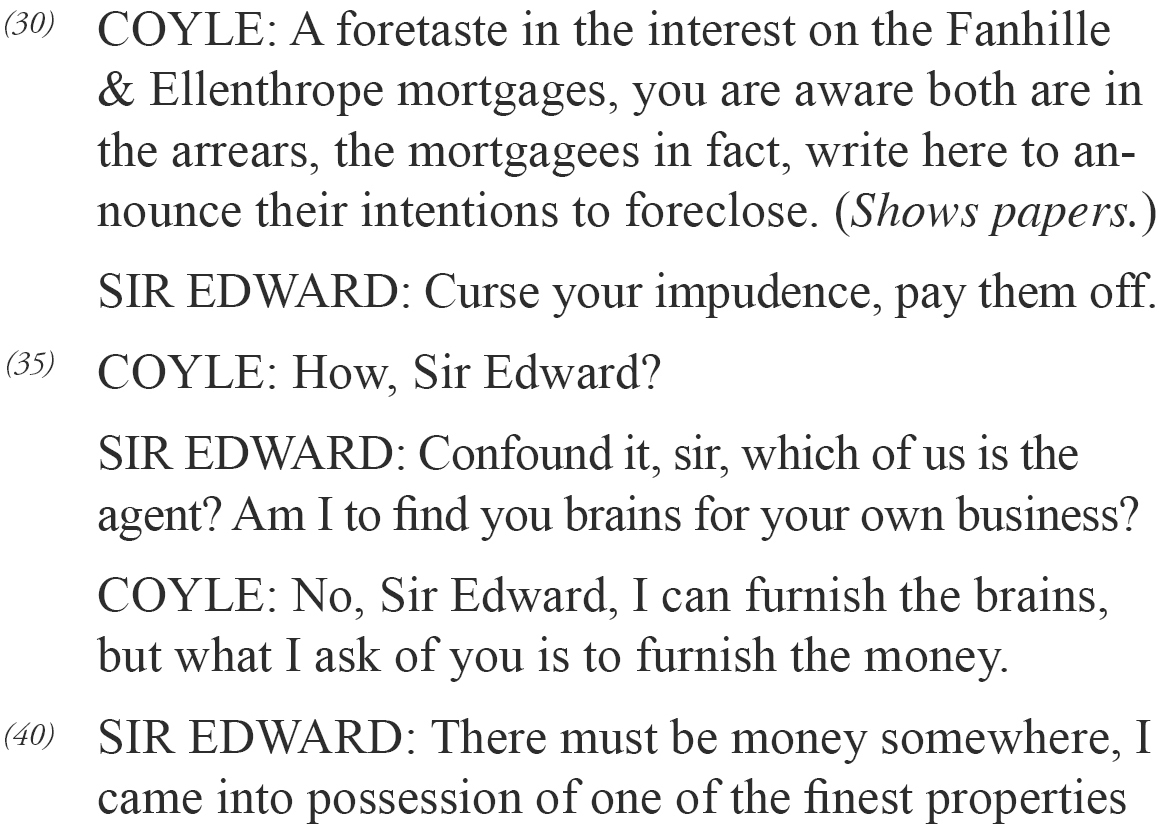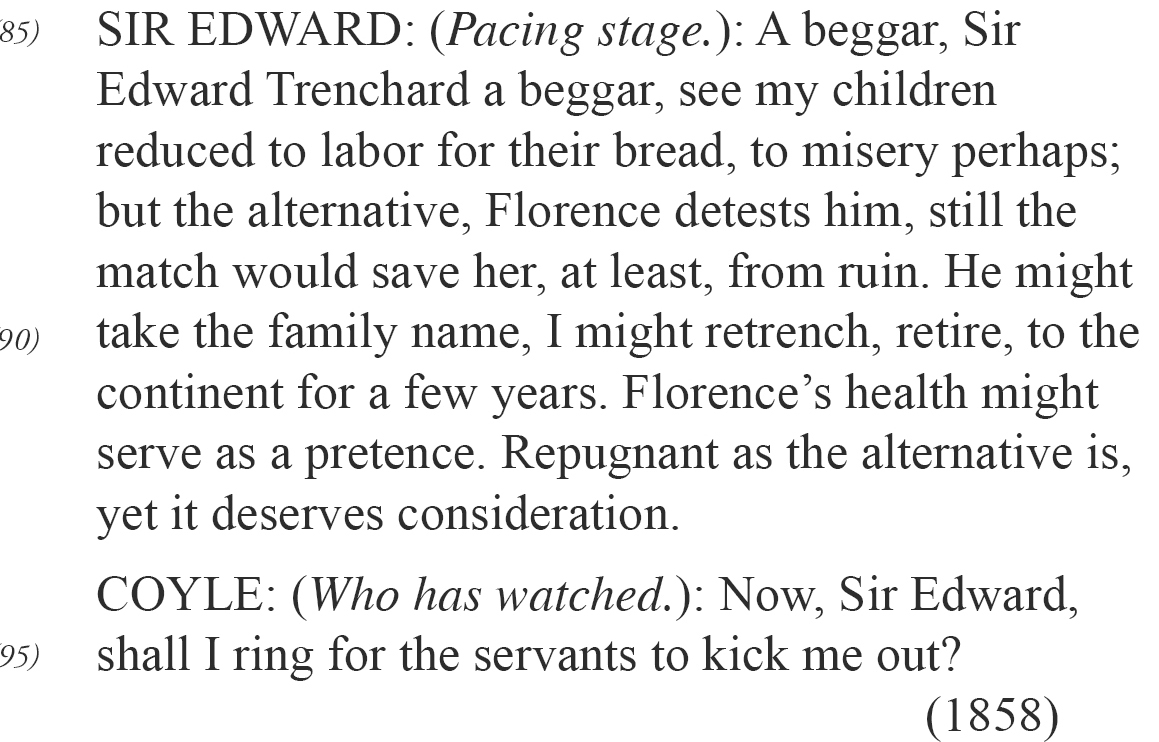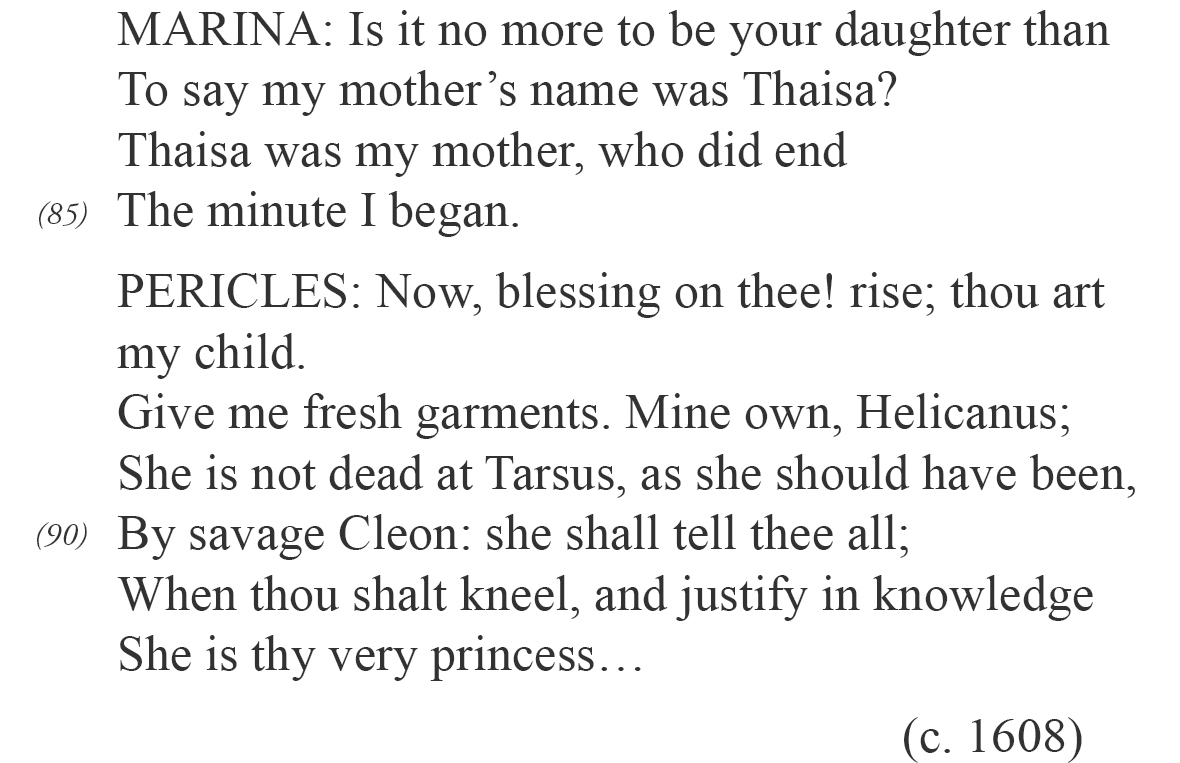Chapter 11
Diving Into Drama
Drama appears on the SAT Subject Test in Literature about half of the time, and we want you to be prepared in case it rears its head. In this chapter, we list some drama terms you should know and give you strategies for approaching questions on this specific genre.
WHAT IS DRAMA?
Drama is a form of literature that tells a story through the representation of dialogue and action; it is usually meant to be performed, on a stage or on screen, by actors who assume the roles of specific characters. Remember that, before people could go to the movies or watch stories unfold on television programs, plays were a primary form of public entertainment and instruction; even now, drama allows audiences to watch actors perform a story’s unfolding.
Each new piece of dialogue in a drama passage will begin with the name of the speaker (in capital letters), followed by a colon and the contents of the speech itself. Whenever the speaker changes, his or her name will begin on a new line. Stage directions, or instructions that tell the actor how to move or speak, will be inserted in parentheses; they are usually written in present tense and printed in italics.
If drama appears on the test at all, it will only be one passage. Luckily, while the layout of a drama passage may be visually different from that of a prose or poetry passage, the basic elements of drama are similar to those of prose and poetry.
WHAT TO LOOK FOR
To practice analyzing drama, let’s look at an example from Trifles, by Susan Glaspell.
(The men go outside.)
MRS. HALE (Resentfully): I don’t know as there’s anything so strange, our takin’ up our time with little things while we’re waiting for them to get the evidence. (She sits down at the big table smoothing out a block with decision.) I don’t see as it’s anything to laugh about.
MRS. PETERS (Apologetically): Of course they’ve got awful important things on their minds.
(Pulls up a chair and joins MRS. HALE at the table.)
MRS. HALE (Examining another block):
Mrs. Peters, look at this one. Here, this is the one she was working on, and look at the sewing! All the rest of it has been so nice and even. And look at this! It’s all over the place! Why, it looks as if she didn’t know what she was about!
(After she has said this they look at each other, then start to glance back at the door. After an instant MRS. HALE has pulled at a knot and ripped the sewing.)
MRS. PETERS: Oh, what are you doing, Mrs. Hale?
MRS. HALE (Mildly): Just pulling out a stitch or two that’s not sewed very good. (Threading a needle.) Bad sewing always made me fidgety.
MRS. PETERS (Nervously): I don’t think we ought to touch things.
MRS. HALE: I’ll just finish up this end.
(1916)
Time Period
As you do when looking at prose and poetry, start by looking at the date of the passage’s publication. What do you know about the global and social history of that period? Can you think of any wars, colonizing activity, scientific developments, or social reforms that the passage’s writer might be engaging with? Such context can help you identify key themes in the passage.
In this example: Trifles was first published in 1916. Given that Mrs. Hale comments resentfully on how the men trivialize the women’s activity—“I don’t see as it’s anything to laugh about”—you might remember that the early twentieth century was a crucial period for the women’s suffrage movements in both Britain and the United States. (The passage doesn’t mention anything overtly military, but another important historical context for a text from this period might be World War I, which began in 1914.)
General hints: Like poetry and prose, drama often responds to the formal conventions and thematic preoccupations of its historical context. Drama written before the 1800s often represents or reworks specific mythological or historical events or relationships—Shakespeare’s Macbeth, for example, retells the story of an early Scottish king. In the nineteenth century, the focus tends to be more on the balance between intellect and emotion, nature and industry; in the later part of the century, literary works often reflect social reform movements addressing issues of race, class, and gender. The twentieth century was marked by two World Wars, plus a global Depression, an ever-increasing rate of scientific and technological change, and greater social mobility. These major events are reflected in literature’s shifting attempts to represent the “real” lives of its characters. Bear in mind that several recent passages on the SAT Subject Test in Literature have come from Anglophone literatures beyond British or American contexts (for example, from South African drama). Using your knowledge of world history can help you consider how a given passage may be engaging with the legacies of colonialism and geopolitical conflict.
Speaker(s)
Who is speaking in the passage? What clues do those characters’ speeches give you about their relationships to one another? Are characters having an argument about something? Declaring their undying love for one another? Meeting for the first time?
In this example: Two characters are speaking—Mrs. Peters and Mrs. Hale—though we also know that there are other characters nearby, since the stage direction at the beginning says that “the men” have just gone “outside.” The women’s dialogue gives hints about the nature of their relationship—Mrs. Hale is more assertive, Mrs. Peters more tentative; they are not close enough to call each other by their first names. Their dialogue also positions the women in relation to other, absent characters: the men outside are referred to as “them,” and Mrs. Hale’s comment about the sewing suggests that they have been discussing another woman (unnamed in the passage), because the sewing “looks as if she didn’t know what she was about!”
General hints: Because plays can’t depend on a narrator’s description to ground the audience in a setting or situation, the majority of text in a drama passage will represent speech and/or action—the passage will transcribe what an audience might hear or see happening on stage. The format of the drama passage means that each new speaker will be named for you, which makes identifying the source of a particular utterance easy—what is sometimes more complicated is teasing out the details, spoken or unspoken, of the characters’ interrelationships, or identifying the differences and similarities in their approaches to the situation at hand.
Situation
What kind of story is the passage telling about the characters and their interaction? What is happening?
In this example: The plot of this passage is that while Mrs. Peters and Mrs. Hale are “waiting” for the men “to get the evidence,” they are looking at “blocks” of sewing. The women seem to have an unspoken common understanding about the unnamed woman whose sewing they’re examining (Mrs. Hale suggests that the sewing seems to reveal something about that woman’s state of mind, and Mrs. Hale and Mrs. Peters “look at each other, then start to glance back at the door”), but when Mrs. Hale begins to redo some of the sewing, it makes Mrs. Peters upset.
General hints: To assess the situation of the passage, think first about the setting and plot of the passage—the story literally being told about the characters’ interaction. Where are the characters, and what are they doing?
Analyzing the form of the dialogue can also be helpful in identifying situation: does dialogue appear in the form of verse, with rhyme schemes and/or line breaks, or in the form of prose sentences? (Playwrights like William Shakespeare sometimes put certain dialogue in verse in order to emphasize a concept or suggest that the speaker is of high socioeconomic status.)
Do the characters seem to be joking with each other, which might suggest the genre of the play is a comedy? Or do they seem to be caught in a downward spiral, which might suggest instead that the play is a tragedy? Having a sense of the genre of the passage can help you eliminate answer choices—in a comedy, characters are unlikely to meet genuinely horrific ends, while a tragedy is unlikely to end with a happy wedding.
Tone/Voice
As in poetry and prose, this category looks at how information is conveyed through the dialogue of the passage. Now that you know what is happening, and to whom it is happening, you can analyze how the passage conveys what is happening. Does one character break off from conversation to reflect on a conflict or confusion alone? Do certain characters’ comments change in tone over the course of the passage? Are certain characters using figurative language—and if so, what are the effects of that imagery?
In this example: Both women speak with colloquial diction throughout the passage. Mrs. Peters’ first comment is made “apologetically”—and the content of the speech suggests that her comment is apologizing for the men’s behavior, because “they’ve got awful important things on their minds.” By the end of the passage, however, in response to Mrs. Hale’s starting to rip out the sewing and redo it, Mrs. Peters’ language is more alarmed than apologetic: she doesn’t think the women should be touching things. Mrs. Hale, on the other hand, starts out defending the women’s “takin’ up our time with little things” while the men are outside; she then becomes agitated by the state of the sewing she’s examining (“Bad sewing always made me fidgety”).
General hints: In many drama passages, you will encounter speeches that are much longer than those here. While dialogue uses interaction between characters to develop an audience’s sense of the characters’ relationships or social situations, a monologue (an extended speech made by one person) allows one character to address or try to persuade other characters of something; a soliloquy (a speech delivered by one character who is on stage alone), like Hamlet’s “To be or not to be” speech, presents in words an individual character’s internal struggles or thought processes.
The diction, syntax, and delivery of all these kinds of expression can shape how you understand the motivations or priorities of specific speakers. A character who often speaks in asides (revealing information to the audience but not to his/her fellow characters) can seem conniving, while a character who is constantly interrupting others and speaks only in extended monologues might come across as egocentric.
Drill 1
Click here to download and print the PDF version of these exercises.
You can apply the same techniques you’ve practiced in the chapters on prose and poetry to help you analyze drama. Try reading this dramatic passage and answering some questions about it. Do the specific questions first, followed by the general questions.

What historical or social contexts, if any, does the play’s date suggest to you?
What does the dialogue reveal to you about the relationship between the characters?
How does Higgins’ language change over the course of his monologue? Who does he seem to be addressing?
What do you learn about Eliza’s situation from reading this passage?
1. The central contrasts in the passage are expressed in all of the following pairs EXCEPT
(A) “A lady in a florist’s shop”...“flower girls”
(B) “Buckingham Palace”...“the Tower of London”
(C) “Mrs. Pearce”...“the King”
(D) “proper bedroom”...“the back kitchen”
(E) “good and do whatever you’re told”... “naughty and idle”
2. From his speech, it seems clear that Higgins views Eliza as
(A) a naïve child
(B) an obedient servant
(C) a potential wife
(D) a futile project
(E) a tenacious competitor
3. According to Higgins, all of the following are characteristic of a “lady” EXCEPT
(A) articulate speech
(B) employment in a florist’s shop
(C) private transportation
(D) fine clothing
(E) the leisure not to work
4. The first four lines of Higgins’ speech imply
(A) the discipline developed in a military background like Eliza’s
(B) Higgins’ prejudice about people of different social classes
(C) Higgins’ long familiarity with Eliza and her character
(D) the insight Higgins has into what motivates women
(E) Eliza’s preference for direction over explanation
5. Higgins’s speech can best be described as
(A) condescending
(B) didactic
(C) instructive
(D) explicatory
(E) apathetic
6. From the passage, Higgins may accurately be described as all of the following EXCEPT
(A) presumptuous
(B) generous
(C) arrogant
(D) self-important
(E) determined
This excerpt is from Pygmalion by George Bernard Shaw. Answers and explanations can be found in Part IV.
Drill 2







For the last time: does the play’s date suggest that specific historical or social contexts might be relevant?
What new information changes the relationship between Coyle and Sir Edward over the course of the passage?
How would you describe the tone of the characters’ dialogue?
1. The phrase “judgment and execution” (lines 6-7) most likely means
(A) a sentence and the death penalty
(B) the moral high ground
(C) an official breakup of a partnership
(D) a judge’s decision and a court order
(E) a search and seizure of property
2. Coyle and Sir Edward’s relationship is that of
(A) money manager and client
(B) lawyer and defendant
(C) servant and master
(D) benefactor and recipient
(E) uncle and nephew
3. The word “security” (line 67) most nearly means
(A) collateral
(B) agreement
(C) assurance
(D) welfare
(E) prize
4. Which of Sir Edward’s choices of words makes it clear that he considers the bills from his creditors to be unfair?
(A) “infernal” (line 16)
(B) “Confound” (line 15)
(C) “extortion” (line 21)
(D) “impudence” (line 34)
(E) “unencumbered” (line 47)
5. What is the deal Coyle wants to strike with Sir Edward?
(A) He will pay off the creditors in exchange for allowing him to marry Sir Edward’s daughter.
(B) He will keep Ravensdale in the family if he is allowed to marry Sir Edward’s daughter.
(C) He will arrange the marriage of Sir Edward’s daughter to the current residents of Ravensdale.
(D) He will marry Sir Edward’s daughter to prevent her at least from financial ruin.
(E) Because Sir Edward is without money, Sir Edward will have to sanction the love affair between Coyle and his daughter.
6. Sir Edward’s final lines, “A beggar, Sir Edward Trenchard a beggar, see my children reduced to labor for their bread, to misery perhaps; but the alternative, Florence detests him, still the match would save her, at least, from ruin. He might take the family name, I might retrench, retire, to the continent for a few years. Florence’s health might serve as a pretence. Repugnant as the alternative is, yet it deserves consideration” (lines 85-93), are an example of
(A) a monologue expressing doubt
(B) a character dissolving into madness
(C) a character addressing the audience
(D) a character voicing both sides of an argument to himself
(E) a speech explaining a plot point to the audience
The excerpt you just read is from Our American Cousin by Tom Taylor. Answers and explanations can be found in Part IV.
Drill 3






1. In context, what does “end” (line 84) most nearly mean?
(A) Finish
(B) Arrest
(C) Die
(D) Fail
(E) Conclude
2. Why does Pericles ask Helicanus to strike him (line 62)?
(A) To prevent him from dying of happiness
(B) To stop him from striking Marina
(C) To prevent him from drowning
(D) To relieve his present pain
(E) To awaken him from this dream
3. Which of the following most accurately describes the character of Marina?
(A) An impostor
(B) The daughter of Pericles
(C) The deceased daughter of a king
(D) A pirate’s hostage
(E) A fairy
4. It can be inferred from the questions Pericles asks that
(A) he is old and confused
(B) he is trying to interrupt the talkative girl
(C) he mistrusts Marina
(D) he finds her story incredible
(E) he is required to confirm her story
5. The tone of lines 15-17 can best be described as
(A) disquieted
(B) jovial
(C) irate
(D) satirical
(E) impatient
6. The purpose of this dialogue is most likely to
I. introduce characters to the audience
II. build tension
III. surprise the audience with new information
(A) I only
(B) I and II
(C) I and III
(D) II and III
(E) All of the above
This scene is from the final act of Pericles, Prince of Tyre by William Shakespeare. Answers and explanations can be found in Part IV.
Summary
Did you get all that?
Make sure you can define the following terms:
○ aside
○ comedy
○ farce
○ form
○ genre
○ monologue
○ soliloquy
○ stage directions
○ tragedy
